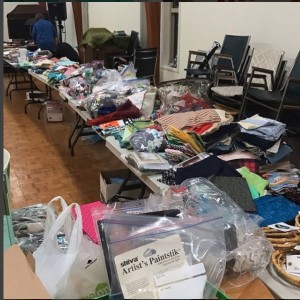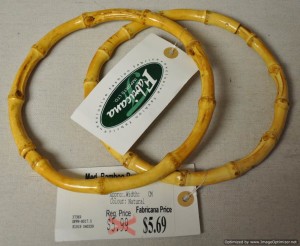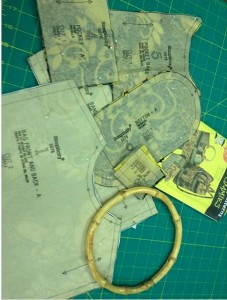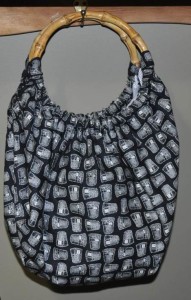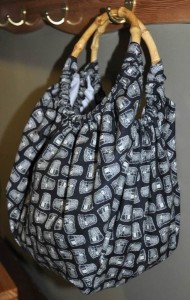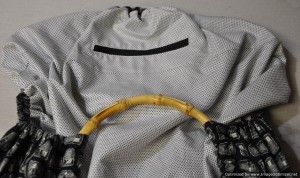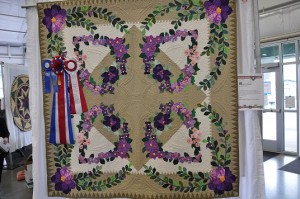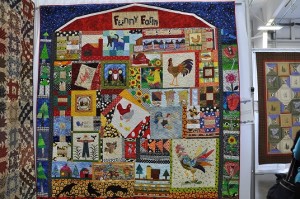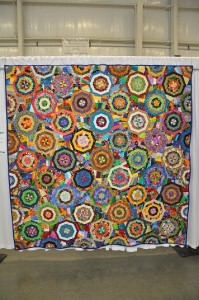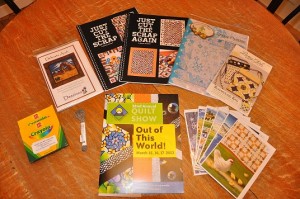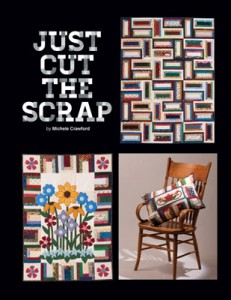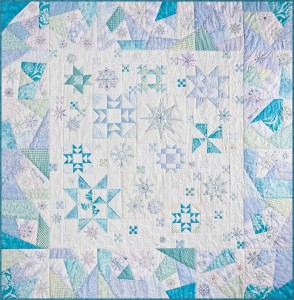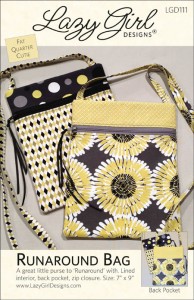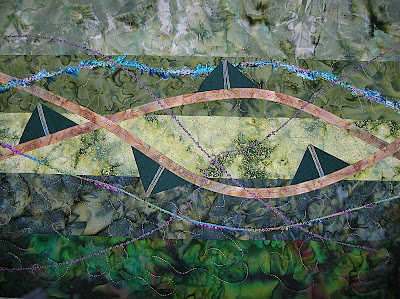Our modern guild meeting was Thursday, February 8. Our annual guild destash usually takes place at the January meeting. Because many members were unable to make the January meeting because of a snow storm / freezing rain, we had Part II of our annual destash at our February guild meeting.
At destash night, members bring any usable items from their sewing rooms that they no longer have use for and put them out on the tables for other members to adopt for free. After all, one person’s junk is another person’s treasure, right?
The tables were loaded! In the bottom right hand corner of the photo (above) you can see some bamboo purse handles. Another member and I each picked up a pair of these round bamboo handles.
After some discussion and joking around, a challenge was born – first person to finish a bag with their handles and post a picture to the guild’s Facebook page…
I worked the next day so I couldn’t start my challenge right away. My challenge partner – Christine – is retired and she was able to start her bag immediately – Friday morning. When I got home from work on Friday there was a picture to taunt me on Facebook with the caption, “Pattern cut, now to sew. How is your bag coming along?”
I got up early Saturday morning and got to work on my bag. I worked through the day, checking Facebook frequently to make sure Christine hadn’t finished her bag yet. I managed to finish my bag late in the afternoon and I got a picture of my finished bag posted to our guild’s Facebook page before Christine.
In the end, I am not sure who really won the challenge. Although I was first to post a picture of a finished bag, Christine outdid me by finishing a total of 6 bags before she called it quits.
My bag was The Great Granny Bag which is a free bag tutorial on Emmaline Bags’ blog.
I modified the pattern by including a zippered pocket on the inside of the bag. This was a new-to-me technique. I made 2 pockets (not intentionally) before I got it right.
This bag will be perfect for transporting projects-in-progress as it is very roomy inside. The elastic on the sides gives it almost unlimited expansion room.
Thank you to whoever provided the bamboo handles on the destash table – they provided entertainment for a friendly challenge and the beginning of a very useful bag!
Because Christine and I were posting our progress to our guild’s Facebook page, other members were watching with interest. The member who organized our destash night made a comment about being inspired to create a challenge for next year – January destash and February challenge. It sounds like we can look forward to some more fun next year in conjunction with the destash.

